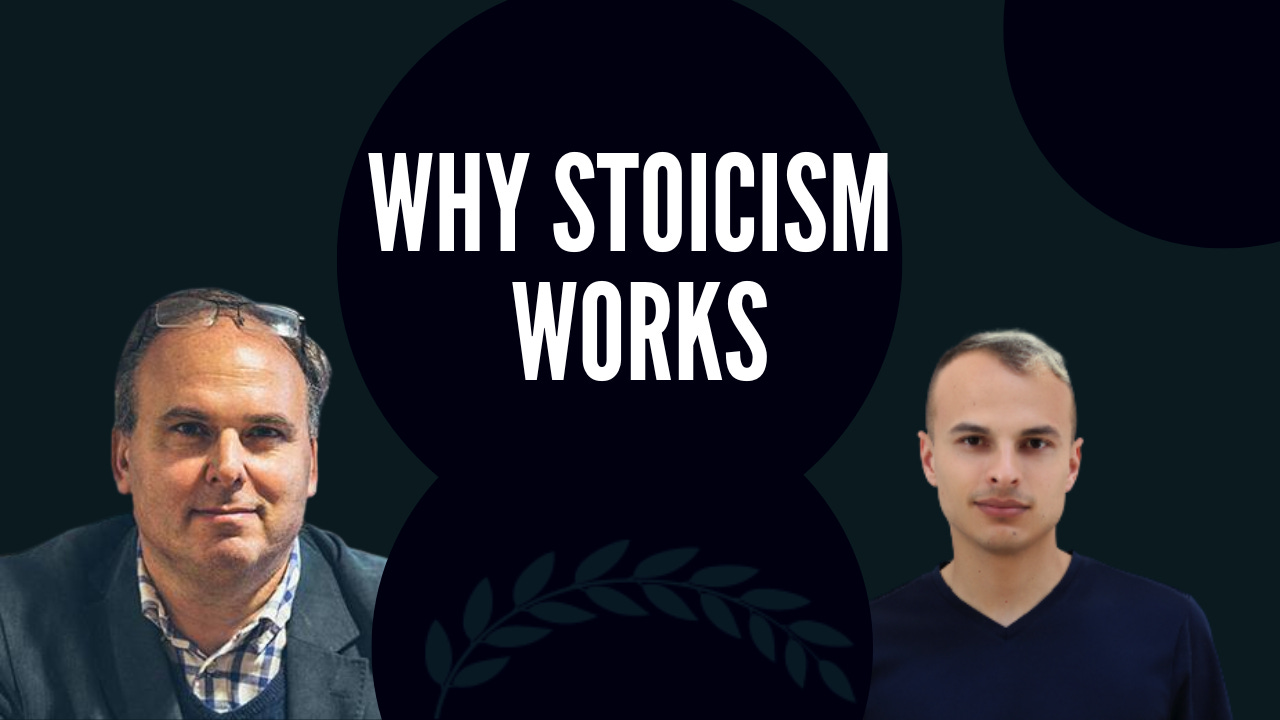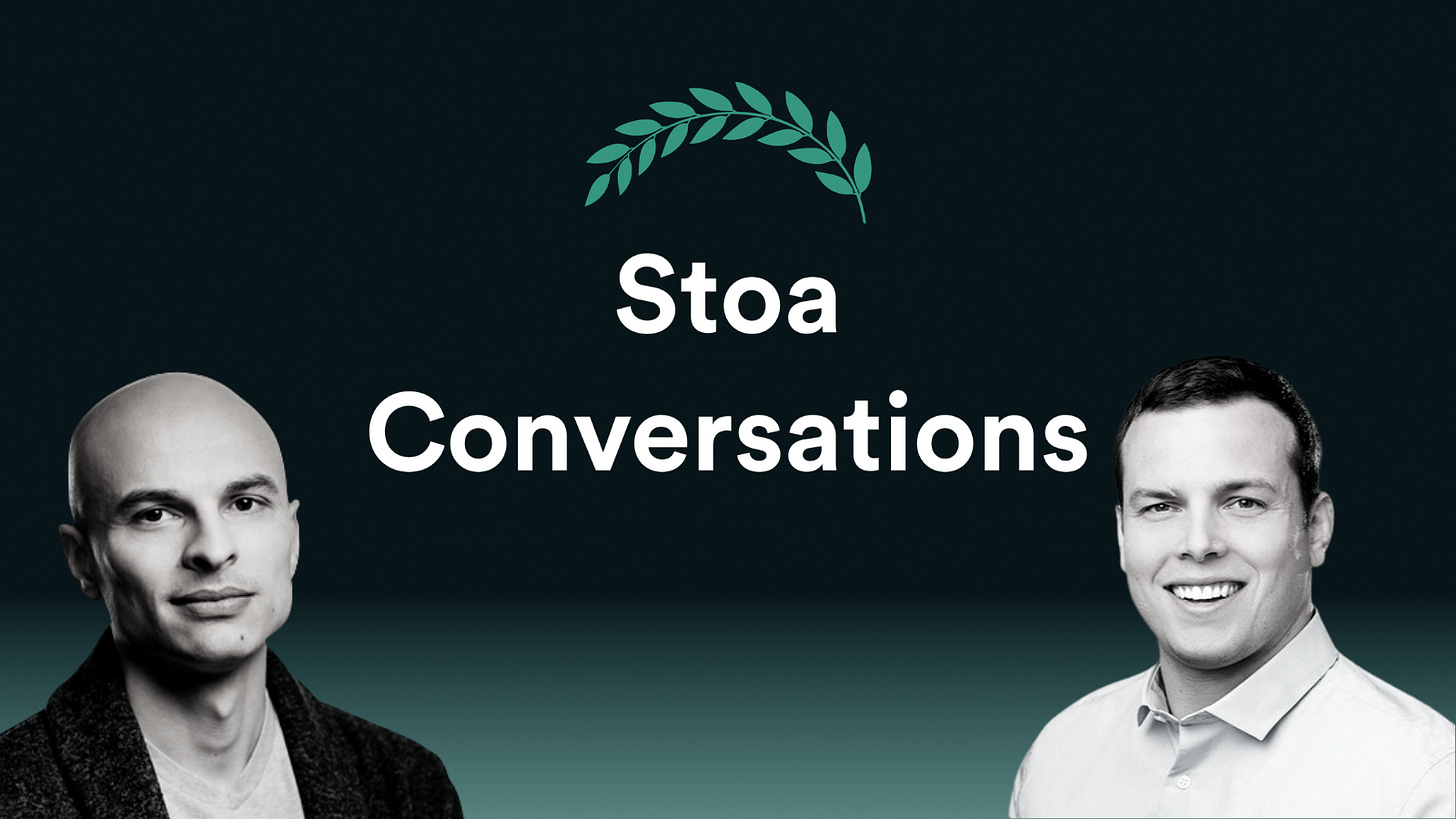5 Ways Stoic Therapy Works
A psychotherapist explains how Stoicism helps
Welcome to The Stoa Letter, the newsletter on Stoic theory and practice.
Every week we share three emails to help you build resilience and virtue with ancient philosophy. Each email includes one meditation on Stoic theory, one action to do in order to become more Stoic, and links to the best resources we’ve found.
🏛️ Theory
What are the psychological techniques that help Stoics live better? I asked psychotherapist and author, Tim LeBon, this question during our last Stoa Conversation:

How Stoicism Addresses Anxiety
How does Stoicism actually make a psychological difference?
stoameditation.com/blog/how-stoicism-addresses-anxiety

He gave a comprehensive list of five things. This is my interpretation of the 5 – check out our conversation for Tim’s exact take.
🧘 Stoic Mindfulness
The Stoic discipline of judgment is all about noticing your thoughts and sensations and then responding to them rationally. This means only assenting to thoughts that are true, without adding unnecessary details or stories.
Sensations and feelings are going to occur whatever we do. Our role is to notice them, our reactions, and our judgements.
This demands cultivating awareness.
🤹 Responding Skillfully
Once you’ve cultivated awareness of your sensations and judgements, you can pause instead of letting them overwhelm you.
But what happens next? This is where different Stoic strategies for handling thought enter.
We can willingly accept thoughts. Some thoughts become harder to manage when we engage with them. Think of them like someone looking for a fight. If you notice someone like this, sometimes it’s better to not engage with them. After they insult you, calmly return your attention to the matter at hand. Starved of attention, the heckler leaves of his own accord. This is the strategy taken by acceptance commitment therapy.
We can dispute our thoughts. Many of our negative thoughts are distortions. By labeling a thought as all or nothing thinking, we gain distance from it, recognize the mistake, and then move back to the matter at hand. For example, harsh feedback doesn’t mean that you are a failure. If the feedback is correct, you made a mistake. The idea that “mistake means failure” is added by you. This is the strategy typically taken by cognitive behavioral therapy.
🎯 Set your Purpose
We also need a purpose that runs through each moment.
As Nietzsche wrote: “A man who has a why can bear any how.”
Why do you want to manage your thoughts and cultivate mindfulness? If the goal is simply to feel better, that may not be a substantive goal that can inspire the required work.
Stoicism holds that our purpose follows from what we are. We’re rational and social beings. As such, our role is to cultivate virtue and live according to Nature.
What is your purpose? When you’ve begun to answer that question, you’ve begun to live.
Tim LeBon’s 365 Ways to Be More Stoic includes an excellent section from Jay Adam speaking on this theme:
Having been involved in criminal behaviour as a young man, I had certain traits hardwired into my thought process and worldview, which got me in a lot of trouble. Stoicism helped me shape my purpose and attain a clear understanding of what I can and cannot control.
Jay Adam
🌱 Develop Virtues
Now it’s time to embody your purpose. This is done by cultivating positive character traits.
If you do not yet see your own beauty, do as the sculptor does with a statue which must become beautiful: he removes one part, scrapes another, makes one area smooth, and cleans the other…In the same way, you too must remove everything that is superfluous, straighten that which is crooked and purify all that is dark until you make it brilliant. Never stop sculpting your own statue, until the divine splendor of virtue shines in you.
Plotinus, Enneads
This demands clarifying what you value and then specifying how these values will be exhibited in your life.
The Stoics defined sages or role models for this purpose. Socrates exemplified epistemic virtues by relentlessly pursuing the truth. Cato the Younger displayed honesty in his battle against Roman corruption. By bringing models to mind you can sketch out what a good life looks like in practice.
🏀 Practice
Stoicism is 99% practice and 1% theory. It works because the tradition has resources available to sustain transformative change.
Through meditation, reflection, morning previews and evening reviews you can ensure that you’re improving daily.
Tim LeBon wrote 365 Ways to Be More Stoic to help other’s practice every day. Each day includes a Stoic lesson and action. We developed the Stoa app for the same reason.
And, of course, the ancient Stoics included exercises and curricula for attaining the good life – that’s what we’re all trying to do by following the Stoic path.
🎯 Action
Consider whether you should invest more in one of the five areas above. If so, determine what you’ll do concretely. Continue on the path!
🔗 Links
📔 I’ve been reading Out of Curiosity – a newsletter to help people get 1% better every day in work and life. It’s a quick and carefully curated newsletter which often uncovers insightful pieces I enjoy reading. Recommended.
🐦️ Michael Tremblay asks, who is the most Socratic public figure today?
🎧️ Michael and I spoke about weakness of will for Stoa Conversations this week – the idea that we recognize something is best to do, but can't motivate ourselves to do it. The Stoics actually thought that this was impossible. We discuss why they disagreed with Plato and Aristotle here:

Why do you do things you know you shouldn’t?
stoameditation.com/blog/weakness-of-will

🏛️ If you haven’t had the chance to read them yet, check out our earlier letters from this week on Stoicism and Meditation:

Mindfulness Meditation for Stoics
How mindfulness meditation is an important tool for Stoics of all types.
www.stoaletter.com/p/mindfulness-meditation-stoics


What’s the difference between different kinds of meditation? Does meditation stop thought?
www.stoaletter.com/p/think-not-think

What did you think of this week's letters?
Help us make the Stoa Letter excellent.
🏆️ Share The Stoa Letter
If you find what we’re doing useful, please share it. Just have people sign up with your link below.
1 Referral — Cheatsheet on The Most Important Stoic Concepts— get access to our list of the most important Stoic concepts with links and instructions for putting each into practice.
3 Referrals – The Stoic Training Program PDF — in this 10-page guide, we share the three main ideas and practices that ground a Stoic approach to life.
5 Referrals – Five Stoic Meditations – get five downloadable meditations to go deeper into your practice.
7 Referrals – Signed Book – Get a signed version of Rome’s Last Citizen. We’ve got a limited number of these. First come, first serve.
Share with your link below.
Share The Stoa Letter
{{rp_personalized_text}}
Or copy and paste this link to others: {{rp_refer_url_no_params}}
Get hundreds of Stoic meditations and lessons with the Stoa app (free download)


